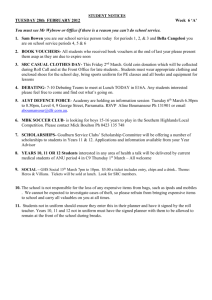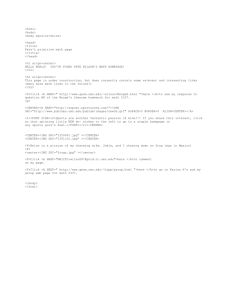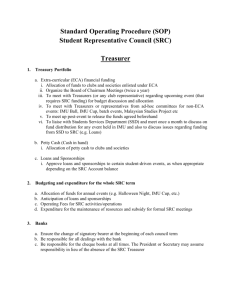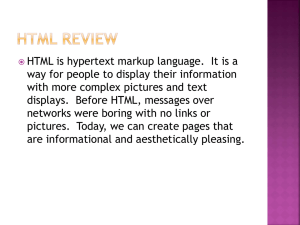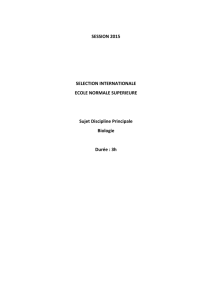Introduction to the DOM
advertisement
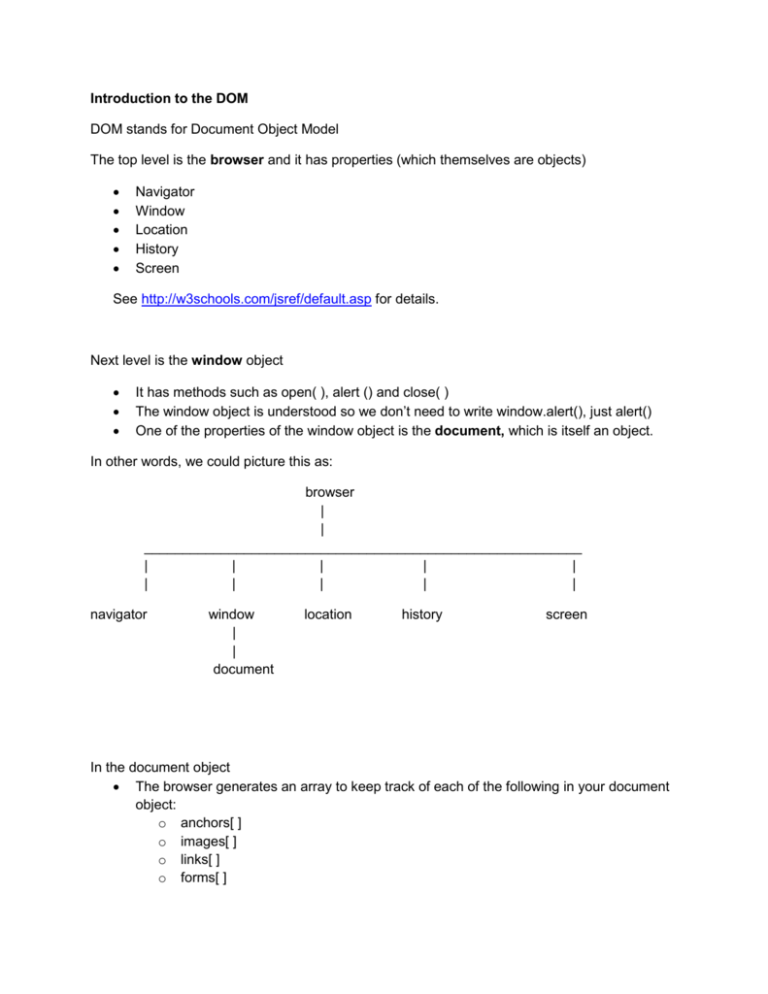
Introduction to the DOM
DOM stands for Document Object Model
The top level is the browser and it has properties (which themselves are objects)
Navigator
Window
Location
History
Screen
See http://w3schools.com/jsref/default.asp for details.
Next level is the window object
It has methods such as open( ), alert () and close( )
The window object is understood so we don’t need to write window.alert(), just alert()
One of the properties of the window object is the document, which is itself an object.
In other words, we could picture this as:
browser
|
|
_________________________________________________________
|
|
|
|
|
|
|
|
|
|
navigator
window
|
|
document
location
history
screen
In the document object
The browser generates an array to keep track of each of the following in your document
object:
o anchors[ ]
o images[ ]
o links[ ]
o forms[ ]
Notice that all these arrays are named with lower case letters and are plural words.
For example, the very first image on your page is
window.document.images[0]
but since window is always understood, you may also identify it as
document.images[0]
If you want to know the src of that image you may refer to it as
document.images[0].src
If you have lots of images, forms, etc. it is more convenient to name them.
For example, if your very first image has the id =’myLogo’ then we may refer to it as
document.images[“myLogo”]
and its src is
document.images[“myLogo”].src
Just as document.images[ ] keeps track of all your images,
document.forms[ ] keeps track of all your forms,
document.links[ ] keeps track of all your links, and
document.anchors[ ] keeps track of all your anchors.
For each form object there is an array called elements[ ] which keeps track of all the
elements (text boxes, check boxes, etc.) in your particular form.
Suppose your page has several forms with the id’s of id=’basicInfo’ and id=’privatetInfo’ and
suppose that the privateInfo form has a text called id=’SocSecNum’.
Then we may refer to that value as
document.forms[“privateInfo”].elements[“SocSecNum”]
which is much easier to follow than using numerical indices in forms[ ] and elements[ ]
Most objects have methods and attributes and event handlers.
A list of the event handlers which may be associated with various tags is found at
http://w3schools.com/jsref/dom_obj_event.asp
In addition, the objects often have methods, attributes and event handlers which are specific
to that type of object. For example, the document has onload and onunload event
handlers.
As you know, an event handler is a bit of JavaScript code which goes into the tag of an
object and is triggered by the event ocurring. For example:
<img id=’CAS_logo’ src=”CAS_logo.gif” onclick=”…” />
When a user clicks on the image the event happens and the event handler is fired.
Whatever is in those quotes is what is executed. (It may be a function call.)
<img id=’goHomeFromCAS’ src=”home.logo” onclick=”window.history.back()” />
The document object comes with three very useful methods:
getElementById( ) returns the element with the id named in quotes
getElementByName ( ) returns the element with the name given in qutoes
getElementsByTagName( ) returns an array of all elements with the specified tag
Notice that Elements is plural in the name for this method – because it
returns a whole array of elements. For example,
getElementsByTagName(‘h1’) returns an array of all your h1 headings.
If I want to do a lot of fancy manipulation (e.g. change the size or src of an image) it is pretty
common to see code like:
myCity=getElementById(“homecity”);
myCity.src = …… etc.
If you want to do some string manipulation on what the user filled into the lastName and
maidenName text boxes in the basicInfo form, then you can write code like:
Ln=getElementById(“lastName”)
Mn=getElementById(“maidenName”)
if ( Ln.toUpperCase()==Mn.toUpperCase()) { .. }
Remember that id’s should be unique! If you have objects buried inside objects buried inside
objects, then by using getElementById( ) you can grab it, assign it to a variable, and then you’re
off and running using the variable to access the attributes.
WARNING: Images are a little trickier --- look at the notes and pages on images, especially
image_access.html and the rollover files in Chapter 3. In particular, using blue for images
defined in img tags and using purple for images defined with the new Image constructor:
images defined in <img …/> tags go in the images[ ] array
images defined with constructors as var moon = new Image( ) do NOT go in
images[ ]
images defined in <img name=’logo’ id=’logo’ .. /> tags belong to the document,
so the right way to refer to them is as document.logo or
document.images[“logo”], and their source attribute is document.logo.src or
document.images[“logo”].src
images defined in variables are referred to the way we always do for variables –
e.g. in the above case as moon or moon.src
images defined in variables may NOT be sent to a document.write( ) but may be
used to swap src files associated with image tags.
You can document write either an entire img tag or a document.image_name.src:
BTW notice the use of both single and double quotes here to distinguish between an
outer and inner quote.
.
WARNING: For XHTML documents, there is more structure and more methods for mainuplating
the objects.
When we get to jQuery, you will see how jQuery manipulates the DOM with ease.
Some simple examples of DOM manipulation are at
http://www.w3schools.com/htmldom/dom_examples.asp
